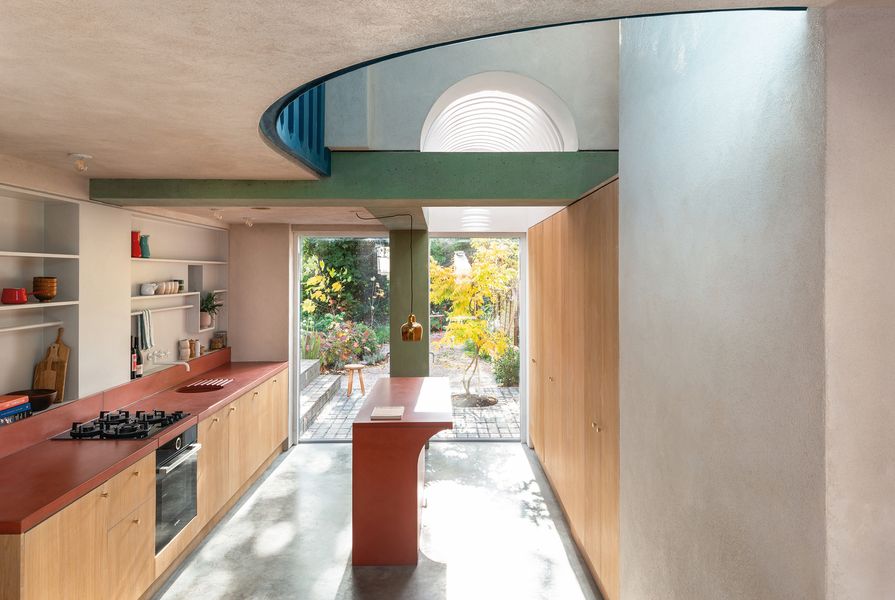In Ornament is Not a Crime, written by Rebecca Gross, the “less is more” design mantra is rebuffed and replaced by a delightful assortment of bold colours, daring forms, dramatic curves and scalloped edges.
Postmodernism emerged in the 1960s in defiance of the conventional design rules and rationality of the 1930–60 modernist movement – an era that favoured functionality over expression and experimentation. The author characterised the origin of the style as being a form of “rebellion” against prescribed formalities. However, as the movement expanded, the mainstream market became oversaturated with “pastiche” projects that no longer embodied the meaning that the movement was founded on.
As with all trends, they change, and the postmodern movement was no different – eventually fading out in the 1990s when designers developed a renewed preference for the traditional.
Rose Street Residence by Fieldwork in Melbourne.
Image: Tom Ross
But now, a resurgence of that pioneering postmodernist spirit can be observed, as featured in this book. An eclectic collection of 21 contemporary interiors from across the globe, each infused with their own postmodern flair and each a mirror of the clients’ personality. Of the presented projects, some designers have intentionally played with postmodern themes, while others have incidentally weaved elements through intuitively.
Projects based in Australia include Polychrome House by YSG (Sydney), Pony by Wowowa (Melbourne), Rose Street Residence by Fieldwork (Melbourne) and Frenches Interior by Sibling Architecture (Melbourne). Across the seas, Katowice by Mistovia (Katowice, Poland), Nadja by Point Supreme Architects (Athens, Greece) and Adventures in Space by Owl Design (London, UK) all exhibit qualities of audaciousness.
Pony by Wowowa in Melbourne. Stylist: Ruth Welsby.
Image: Martina Gemmola
The House Recast by Studio Ben Allen (London, UK) is one project that subtly incorporates postmodern design principles through concrete volumes. At first glance, the home does not look quintessentially postmodern – in part because of the predominantly natural colour scheme – however, concrete apertures, exaggerated forms, patterned and pigmented concrete and decorative brickwork tell a different story. Founder of the practice Ben Allen asserts that there is a misconception that postmodern design is about using joyful colours “But underneath, I think the idea is about reengaging with a more playful and less serious way of making architecture. To do it with enjoyment and make it fun or slightly cheeky,” he said.
Included within the book are small designer profiles revealing contemporary, crafted furniture and objects influenced by postmodern concepts. Queensland’s very own design and fabrication studio Fearon features within these profiles.
Ornament is Not a Crime showcases practices that have departed from formulaic conventions, each experimenting with shape, scale and form to deliver something memorable. To find out more about the book, visit the Thames and Hudson Australia website.





















